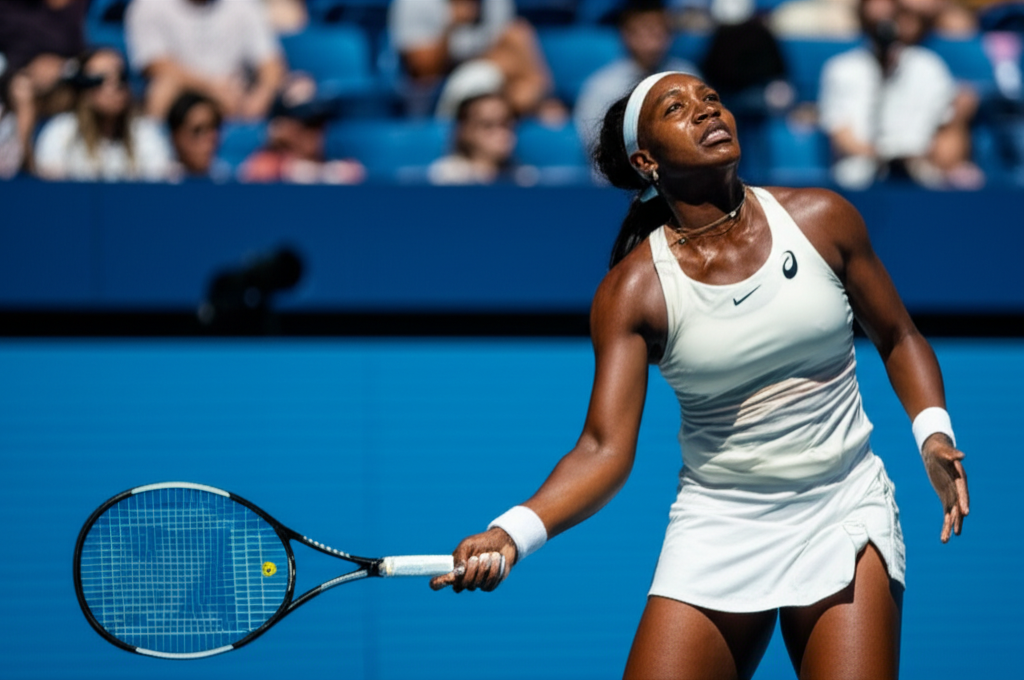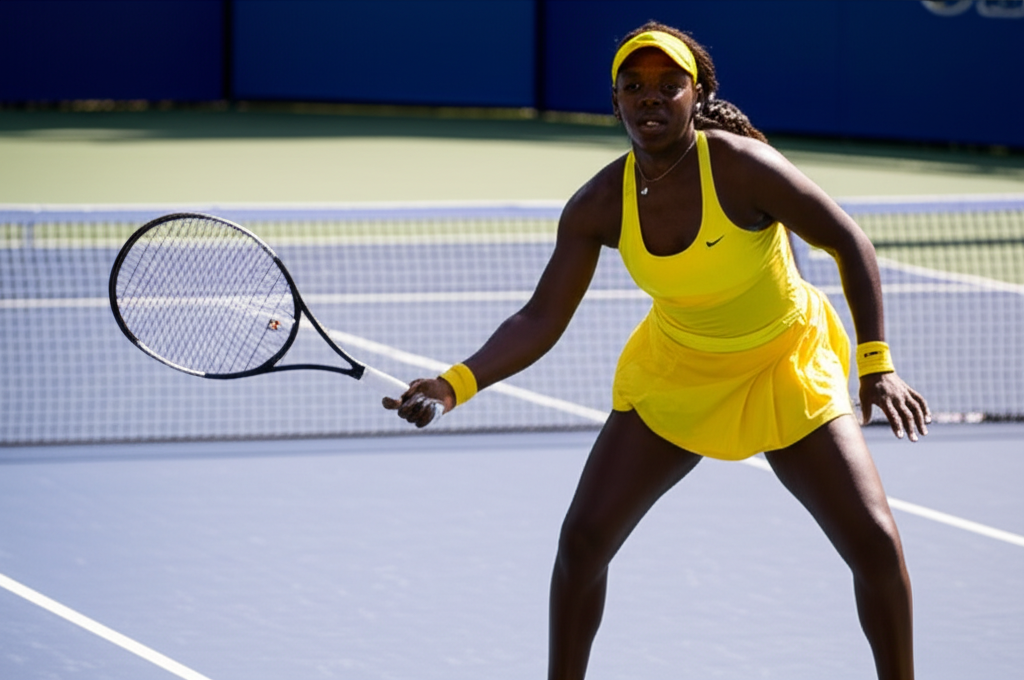New York, NY – As Coco Gauff prepares to defend her US Open title, alarming double fault statistics cast a shadow over her campaign. The American star currently leads the WTA Tour in double faults for the 2025 season, a persistent issue that has plagued her performance and prompted a late-stage coaching change in a bid for a solution.
Gauff has accumulated a staggering 320 double faults across 47 matches this year, averaging 6.8 per match—a figure significantly higher than any other player on the tour. This trend is not new; she also led the WTA in 2024 with 430 double faults over 71 matches, averaging six per outing. Such numbers highlight a critical vulnerability as she steps onto the courts of Flushing Meadows.
The impact of these service woes has been starkly evident in recent tournaments. Gauff committed 16 double faults in her quarterfinal loss to Jasmine Paolini at the 2025 Cincinnati Open, a match where her serving troubles proved decisive. Even in victorious matches, the issue has loomed large; she racked up 23 double faults in a win against Danielle Collins in Montreal, followed by 14 in her subsequent match there. Looking back, her 2024 US Open title defense was cut short in the fourth round by Emma Navarro, a match where Gauff hit 19 double faults, with 11 occurring in the final set.

Understanding the Double Fault Dilemma
Technical vs. Mental Challenges
The root causes of Gauff’s double fault struggles appear to be multifaceted, involving both technical and psychological components. Experts have pointed to specific technical flaws, including an inconsistent ball toss, incorrect grip, a low elbow, and a tendency to collapse her left side and decelerate her swing on the second serve. Gauff herself has acknowledged the mental aspect, stating, “I think it’s sometimes more of an emotional, mental thing because if I go out on the practice court right now, I would make, like, 30 serves in a row.” This suggests that while the physical mechanics are present, pressure in match situations significantly impacts her execution.
The Cost of Free Points
In tennis, a double fault is an immediate loss of a point, handed freely to the opponent without them having to hit a return. This can be a “crucial game changer,” particularly at critical junctures like break points, swinging momentum and confidence away from the server. Consistent double faults can disrupt a player’s focus and ultimately influence the outcome of tightly contested matches.

A Desperate Measure Ahead of Flushing Meadows
Coaching Change and New Hope
Recognizing the severity of the issue, Gauff has made a significant adjustment just days before the US Open. She parted ways with coach Matt Daly and brought on Gavin MacMillan, a biomechanics coach renowned for his work with World No. 1 Aryna Sabalenka. MacMillan is credited with transforming Sabalenka’s serve, helping her overcome similar struggles in 2022 and leading to three Grand Slam titles. Gauff expressed her conviction in this “very sudden decision,” stating, “I do know I needed to make a change — technical change — to it, and I don’t want to waste time continuing doing the wrong things.” MacMillan’s approach focuses on refining mechanics, including weight shifts, wrist angles, and toss control.
Gauff’s Resolve for the US Open
Despite the challenging statistics and the pressure of defending a Grand Slam title, Gauff remains resolute. She aims to leverage MacMillan’s expertise to iron out the inconsistencies that have plagued her serve. Her determination to “not lose matches like this anymore” underscores the high stakes for her at this year’s US Open. While the timing of such a significant technical change so close to a major is unconventional, Gauff’s move reflects her commitment to long-term improvement and her immediate need to solidify her serve as she vies for a second consecutive US Open trophy.








No Comment! Be the first one.